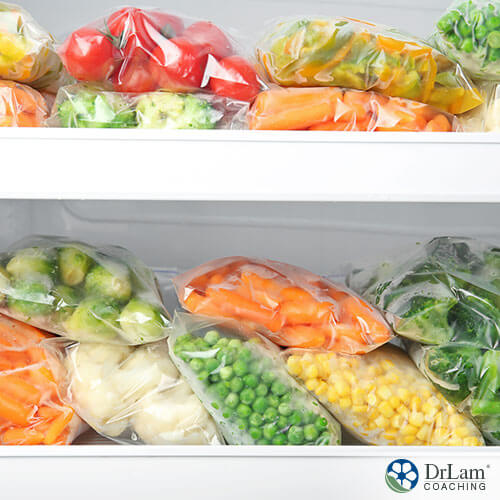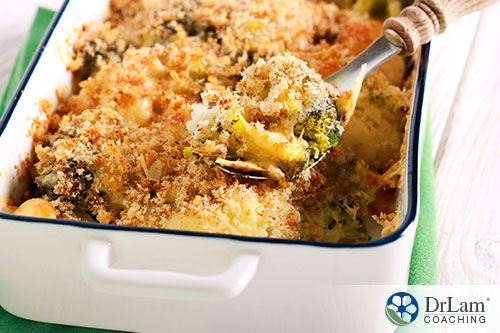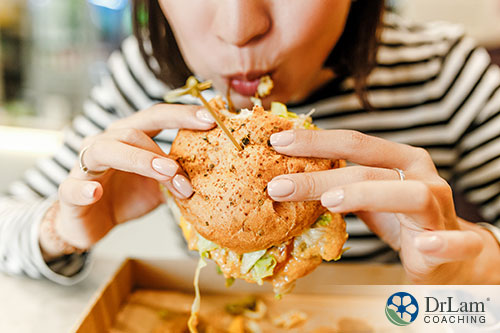 We know that fresh vegetables are the best, but they are, for many reasons, not always available. Besides, fresh vegetables take time to clean and prepare and are also usually more expensive than frozen ones. Fortunately, ever since deep-freezing was invented, the option of cooking frozen vegetables made a life a lot easier.
We know that fresh vegetables are the best, but they are, for many reasons, not always available. Besides, fresh vegetables take time to clean and prepare and are also usually more expensive than frozen ones. Fortunately, ever since deep-freezing was invented, the option of cooking frozen vegetables made a life a lot easier.
Although their texture may be different from that of the fresh veggies, frozen vegetables are much healthier than canned ones. Deep-freezing is the quickest and healthiest way of preserving vegetables. It requires minimum preparation and no preservatives or heating are necessary.
If frozen properly, vegetables retain most of their nutrients, flavor, and color. The trick for being successful cooking frozen vegetables is to prepare them in a way that will retain all of their nutrients.
Fresh and frozen vegetables have a different texture and require different cooking times. It's never a good idea to mix them.
Frozen vegetables contain a lot of water which is why they are generally much softer when thawed (compared to fresh produce). As a rule, they both taste and look better if not defrosted before cooking. However, cooking frozen vegetables means you should know how each vegetable reacts to heat. For example, certain vegetables should be at least partially defrosted before cooking, for example, corn on the cob.
Frozen vegetables are not "dead." They are still very much alive but only have their enzyme activity slowed down. However, provided they are kept at 0 degrees Fahrenheit or -18 degrees Celsius, their nutrients will be preserved. Still, even frozen vegetables don't last forever and should be used within 10 months of freezing, ideally sooner. Therefore, cooking frozen vegetables does require keeping track of what you've put in the freezer and when.
We are all familiar with freezer burn. It occurs when food kept in a deep-freezer loses its moisture and changes color. The discoloration is a sign that frozen food has been damaged by dehydration and oxidation.
The trick with cooking frozen vegetables is to ensure they retain all their nutrients and flavor. The easiest way to avoid nutrient loss is to make sure veggies are packed in airtight containers and are not put back into the freezer once they are defrosted.
Let's explore some common mistakes that relate to cooking frozen vegetables:
When you buy frozen veggies, make sure they have not been defrosted and frozen again. How can you tell? Very simply, if the frozen vegetables are clumped together, they have been thawed and refrozen (maybe more than once). As a result, some of their nutrients have been lost and the color, texture, and flavor of such veggies have certainly been affected.
Although frozen vegetables can be used in almost all the dishes that are based on vegetables, it's best to use them in dishes like stews and soups. Generally speaking, to succeed when cooking frozen vegetables you should stay away from fancy dishes or dishes where the main ingredients are the vegetables.
Most vegetables are blanched before freezing, which is why they require shorter cooking time than fresh veggies. Although frozen veggies can be just as nutritious as the fresh ones, their texture and flavor are often ruined through overcooking. Most tips for cooking frozen vegetables revolve around preparing them in a way that will prevent flavor- and nutrient-loss.
Learn to avoid mistakes when cooking frozen vegetables so they don't turn into a soggy, tasteless mess. If you plan to use a microwave, you should never thaw veggies before cooking. To make them crispier, keep them in the microwave without any water for 5 minutes.
Frozen veggies can be used for almost all the dishes that require vegetables. However, because of their slightly changed texture, they are better suited for recipes based on soups or rich sauces.
Ingredients:
Directions:
Ingredients:
 20 grams frozen broccoli
20 grams frozen broccoliDirections:
Ingredients:
Directions:
A healthy microbiome is the main requirement for good health. To ensure it stays healthy and successfully protects you from pathogens and inflammation, you need to take good care of it.
Most of us rarely think about the friendly bacteria that inhabit our gut and guard us against illnesses. It's usually only once we start experiencing symptoms of the disrupted digestive system that we stop to think about them. The tell-tale signs that harmful bacteria are taking over include constipation, diarrhea, gas, bloating, indigestion, and heartburn.
Fortunately, an anti-inflammatory diet rich in fiber and healthy fats but free of refined carbs, sugar, dairy, and meat will quickly re-establish balance in your gut. Or maybe not.
It can't be a coincidence that both gastrointestinal disorders and Adrenal Fatigue Syndrome (AFS) are on the rise. A growing body of research suggests that there is a strong connection between our overall health and the health of our gut.
There are numerous ways in which harmful bacteria affect our physical and mental health. A solution to chronic gut problems may be as simple as taking more probiotic-rich foods. Probiotics can do more than improve your digestive health. They can also alleviate mild depression and anxiety, the conditions that those affected with AFS usually struggle with.
Besides, cruciferous vegetables such as broccoli, cauliflower, cabbage, and kale are rich in glucosinolates. When broken down by microbes, they release certain substances that help lower inflammation. They also lower your risk of some types of cancer, for example breast, gladder, colon, liver, lung, and stomach cancer. So, eating some of these vegetables every day will significantly reduce your risk of these conditions.
Fortunately, all these veggies will freeze easily so you can have them on your table throughout the year. Therefore, cooking frozen vegetables rich in cancer- and depression-fighting compounds should become your priority even if you are, at the moment, perfectly healthy.
Regardless of what may have triggered your adrenal fatigue, there will almost always be a link to your gut.
 We know that chronic stress often causes gut problems, which, in turn, may act as a trigger for adrenal fatigue symptoms. A poor diet is a kind of stress. So, those who eat unhealthily will almost certainly have their cortisol levels significantly depleted. Besides, they put their bodies under unnecessary stress as they make them run on empty. When such people come down with an infection or inflammation, they generally take much longer to heal.
We know that chronic stress often causes gut problems, which, in turn, may act as a trigger for adrenal fatigue symptoms. A poor diet is a kind of stress. So, those who eat unhealthily will almost certainly have their cortisol levels significantly depleted. Besides, they put their bodies under unnecessary stress as they make them run on empty. When such people come down with an infection or inflammation, they generally take much longer to heal.
Some of the nutrients particularly important for good adrenal health include:
Foods rich in Vitamin B complex are essential for your well-being. Of these, vitamin B5 or pantothenic acid is critical for adrenal health. Fortunately, a plant-based diet can provide sufficient amounts of this nutrient. It can be found in oats, Brazil nuts, potatoes, avocados, and legumes.
Without vitamin C your adrenal glands cannot produce cortisol. This is why taking enough foods rich in vitamin C becomes particularly important during times of stress. The best sources of this vitamin are citrus fruits, berries, broccoli, brussel sprouts, spring greens, and tomatoes.
L-tyrosine is an amino acid whose key function is to help relieve excess stress on the adrenal glands. Fortunately, many foods are rich in this nutrient. It can be found in whole grains, avocados, bananas, legumes, nuts and seeds.
Therefore, a plant-based diet is key both as prevention and as a natural aid for many conditions. The best sources for what your adrenal glands need to stay healthy are fruits and vegetables. Cooking frozen vegetables is a way of getting all the essential nutrients even when fresh foods are not available.
Numerous factors affect your energy level. At the same time, your energy levels have a direct influence on your health. To fight persistent exhaustion, you have to know what you're facing. There are 5 things that affect your energy level:
Our body converts carbohydrates, proteins, and fats we get from our diet into fuel that keeps it going. Therefore, a balanced diet, ideally plant-based, can ensure that all your organs get the nutrients they need to function well.
Hormones are responsible for good communication between various organs and our bodies rely on them to run smoothly. Balanced nutrition is essential for balanced hormone levels. This indirectly helps us avoid conditions such as cancer, diabetes, and arthritis.
There is a very real link between mind and body. People often cope with high and continuous levels of stress by developing certain psychological defense mechanisms that may eventually manifest as certain conditions.
Toxins may accumulate gradually, over many years, before you start experiencing the first symptoms of toxic overload. However, sooner or later, some of your organs will start shutting down. However, if you suffer from adrenal fatigue, get professional help when detoxing.
All stress-management therapies focus on calming your mind, which, in turn, calms your cardiovascular functions. Simply choose the ones that work best for you.
 The main reason to take a chronic absence of energy seriously is very simple. To be healthy, your energy needs to run smoothly, feeding your body and mind with nutrients they need to cope with pathogens, stress, and inflammation.
The main reason to take a chronic absence of energy seriously is very simple. To be healthy, your energy needs to run smoothly, feeding your body and mind with nutrients they need to cope with pathogens, stress, and inflammation.
Nutrients that boost metabolism also support your energy level. Together, they improve the self-healing mechanisms of your body. And when your body can self-repair on its own, regaining balance in case of an injury or illness, is simply a matter of time.
However, a balanced, plant-based diet does not only boost your energy, but it also helps regulate thyroid hormones. Regular consumption of vegetables, fresh or frozen, lowers the risk of developing hyperthyroidism and boosts the thyroid function. And when your thyroid is working properly, it becomes so much easier to cope with stress, hormone imbalance, or mood swings.
© Copyright 2020 Michael Lam, M.D. All Rights Reserved.
Cooking frozen vegetables is less expensive than cooking with fresh ones. Besides, they are available throughout the year, you save time by not having to clean and prepare them for cooking. Additionally, the freezing process does not require a lot of work.
